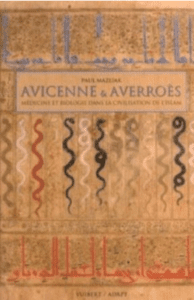It is hard to know what to make of someone who has written books on philosophy, theology, medicine, astronomy, physics, law, and linguistics. In our time this would have been impossible. Not so in medieval Andalusia, where Ibn Rushd, now best known under his Latinized name of Averroes, never missed a day reading or writing except when he married and when his father died. He is remembered principally for his extensive commentaries on Aristotle, which earned him his name the Commentator.
Of his sixty-seven works, a surprising twenty-one are about medicine. His most famous one is his “General Principles of Medicine” of 1162, which included commentaries on Galen and Avicenna, and for centuries was an established textbook in European countries. It was divided into seven sections, 1. Anatomy, 2. Physiology 3. Pathology 4. Symptomatology 5. Pharmacology 6. Hygiene 7. Therapeutics. In its Latin translation as The Colliget, the book was used at the famous University of Padua as a scholastic book for instruction in medicine.
He was much in favor of anatomy and dissection, feeling that an appreciation of the human body strengthened the faith in God as the author of the remarkable handiwork of his creation. He commented on Parkinson’s disease, which he attributed to a disorder of the function of the retina; and he wrote about stroke and about sexual and erectile dysfunction. In therapeutics he relied on a combination of oral drugs and diet and studied the treatment of poisons and venoms by the appropriate antidote.
Ibn Rushd was born in Cordova in 1126 to a family of prominent judges. He worked for the Almohad sultans in their capital in Marrakesh, and at one stage was court physician. Appointed by the sultan as judge in Seville, later in Cordova and then again in Seville, he returned to Marrakesh where he died in 1198. He is remembered as a great world philosopher, mentioned by Dante in the Divine Comedy, by Chaucer in the Canterbury Tales, painted by Rafael in his fresco of the School of Athens, and more recently featured in several movies. He has a plant genus and a crater on the moon named after him.




Leave a Reply